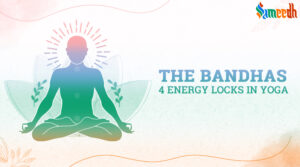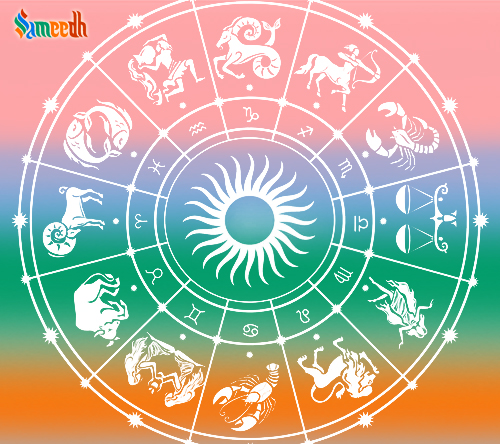Bandhas are a significant aspect of yoga practices within Hinduism, particularly in Hatha Yoga and Kundalini Yoga traditions. Bandha, derived from the Sanskrit word “bandh,” means to lock, hold, or tighten.

The introduction of bandhas in Hinduism is deeply rooted in the ancient tradition of yoga, which encompasses a comprehensive system of physical, mental, and spiritual practices aimed at achieving harmony, well-being, and self-realization.
Bandhas are energy locks or seals performed within the body by contracting specific muscles, aiming to regulate the flow of prana (vital energy) and facilitate the movement of Kundalini energy along the subtle energy channels (nadis).
The origins of Hatha Yoga and the introduction of bandhas can be traced back to the early centuries of the Common Era, with the emergence of seminal texts such as the Hatha Yoga Pradipika, the Gheranda Samhita, and the Shiv Samhita. These texts, attributed to various sages and yogis, provide detailed instructions on yoga practices, including the techniques and benefits of bandhas.
The introduction of bandhas in Hinduism is deeply rooted in the ancient tradition of yoga, which encompasses a comprehensive system of physical, mental, and spiritual practices aimed at achieving harmony, well-being, and self-realization. The concept of bandhas as energy locks or seals within the body is closely associated with the practice of Hatha Yoga, a branch of yoga that focuses on physical postures (asans), breath control (pranayam), and purification techniques (kriyas) to balance and harmonize the subtle energies of the body.
Bandhas are considered integral components of Hatha Yoga practices, aimed at regulating the flow of prana (vital energy) within the body and facilitating the awakening of Kundalini energy—the dormant spiritual energy believed to reside at the base of the spine. By contracting specific muscles and creating internal locks, bandhas help redirect and channel the flow of prana along the subtle energy channels (nadis) and energy centers (chakras) of the body, leading to physical, mental, and spiritual purification and transformation.
The introduction of bandhas in Hinduism reflects the holistic understanding of human existence as a multidimensional interplay of body, mind, and spirit. Through the practice of bandhas, practitioners seek to harmonize and balance the subtle energies of the body, awaken higher states of consciousness, and ultimately attain union with the divine. Bandhas are considered powerful tools for cultivating self-awareness, inner strength, and spiritual evolution on the path of yoga and self-realization.
Over the centuries, the practice of bandhas has been passed down through oral tradition and lineage-based transmission within various schools of yoga, including the Nath tradition, which has played a significant role in preserving and disseminating the teachings of Hatha Yoga. Today, bandhas continue to be an integral aspect of yoga practices, embraced by practitioners worldwide seeking to deepen their understanding of the body-mind connection and unlock the transformative potential of yoga.
There are several bandhas commonly practiced in Hindu yoga traditions, each with its unique purpose and technique:
- Mula Bandha (Root Lock): Mula Bandha involves contracting the muscles of the pelvic floor, particularly the muscles around the perineum. This bandha is believed to help stabilize the body, awaken the dormant energy located at the base of the spine (Muladhara chakra), and prevent the downward flow of energy.
- Uddiyana Bandha (Abdominal Lock): Uddiyana Bandha is performed by drawing the abdominal muscles inward and upward, lifting the diaphragm and creating a hollow space in the abdominal cavity. This bandha stimulates the digestive organs, enhances respiratory function, and activates the solar plexus (Manipura chakra), promoting vitality and inner strength.
- Jalandhara Bandha (Throat Lock): Jalandhara Bandha involves tucking the chin towards the chest, lengthening the back of the neck, and gently pressing the chin against the chest. This bandha is often practiced in conjunction with pranayama (breath control) to retain and redirect the flow of prana within the body, particularly towards the upper energy centers (chakras) and the brain.
- Maha Bandha (Great Lock): Maha Bandha is a combination of all three bandhas—Mula Bandha, Uddiyana Bandha, and Jalandhara Bandha—performed simultaneously. This advanced practice is believed to awaken Kundalini energy, balance the flow of prana in the body, and induce deep states of meditation and spiritual awakening.
In Hindu yoga traditions, bandhas are integrated into various yoga practices, including asan (physical postures), pranayam (breath control), and meditation. They are considered powerful tools for harnessing and directing the subtle energies of the body, awakening spiritual consciousness, and facilitating the union of individual consciousness with the universal consciousness. Practicing bandhas under the guidance of a qualified yoga teacher is recommended to ensure safety and effectiveness.
